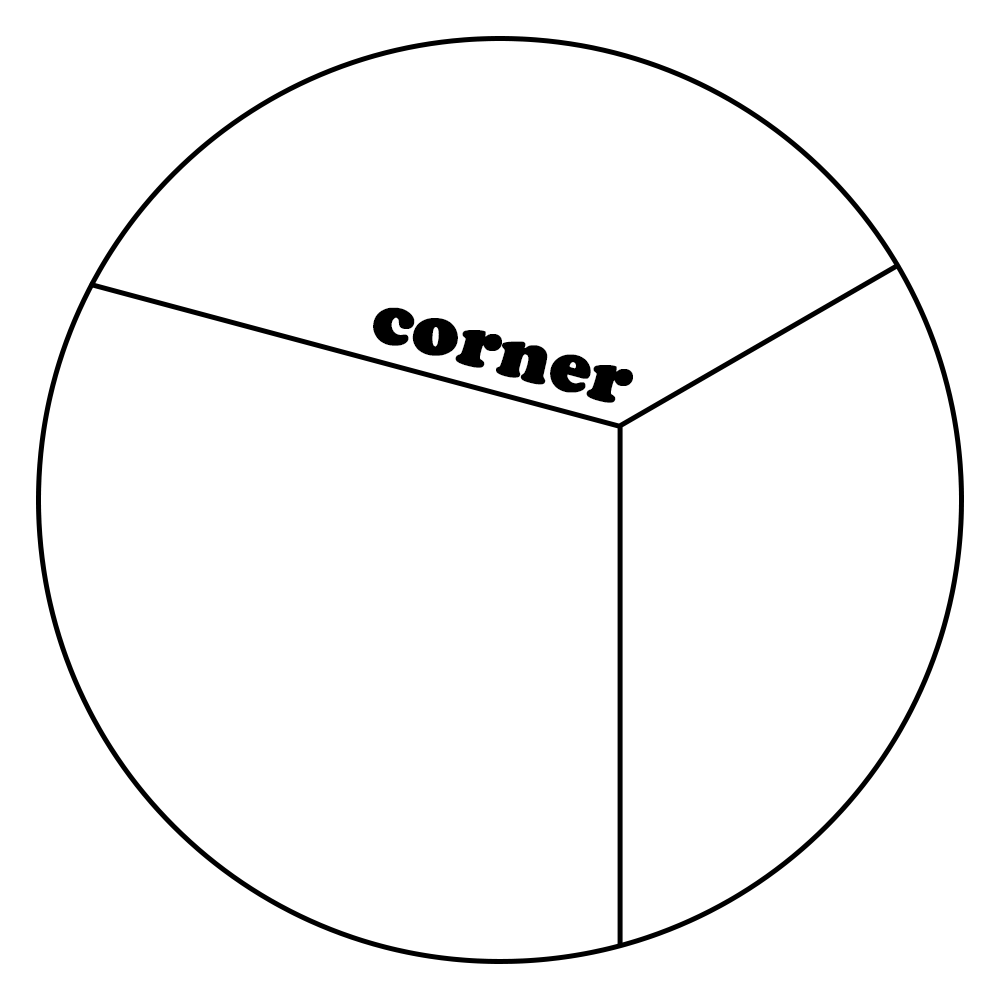상세 컨텐츠
본문


INDEX
7장 컴포넌트의 라이프사이클 메서드
1. 라이프사이클 메서드의 이해
2. 라이프사이클 메서드 살펴보기
2.3 getDerivedStateFromProps 메서드
2.6 getSnapshotBeforeUpdate 메서드
3. 라이프사이클 메서드 사용하기
4. 정리
● 정리
5. Question 개념 정리 및 코드 문제
1. 라이프사이클 메서드의 이해
모든 리액트 컴포넌트에는 라이프사이클 메서드가 존재한다.
컴포넌트의 수명은 페이지에 렌더링되기 전 ~ 페이지에 사라질 때까지이다.
라이프사이클 메서드는 클래스형 컴포넌트에서만 사용할 수 있다.
함수 컴포넌트의 경우 Hooks 기능을 사용하여 처리한다. ➨ 8장
#라이프사이클 메서드: 생명주기 메서드라고도 한다. 마운트, 업데이트, 언마운트 때에 호출되는 메서드들을 말한다.
● 개념
라이프사이클 메서드의 종류는 총 9가지이다.
- Will 접두사가 붙은 메서드: 어떤 작업을 작동하기 전 실행되는 메서드
- Did 접두사 붙은 메서드: 어떤 작업을 작동한 후에 실행되는 메서드

라이프사이클은 마운트, 업데이트, 언마운트로 나뉜다.
- 마운트: DOM이 생성되고 웹 브라우저에 컴포넌트가 나타날 때
- 업데이트: 컴포넌트 정보 업데이트
- 언마운트: 컴포넌트를 DOM에서 제거할 때
1. 마운트(mount)

- constructor: 컴포넌트를 새로 만들 때마다 호출되는 클래스 생성자 메서드
- getDerivedStateFromProps: props에 있는 값을 state에 넣을 때 사용하는 메서드
- render: UI를 렌더링하는 메서드
- componentDidMount: 컴포넌트가 웹 브라우저에 나타난 후 호출되는 메서드
2. 업데이트(update)
컴포넌트가 업데이트하는 경우
- props, state가 바뀔 때
- 부모 컴포넌트가 리렌더링될 때
- this.forceUpdate로 강제 렌더링할 때

- getDerivedStateFromProps: 업데이트 시작 전에 호출되는 메서드로, 마운트 과정에서도 호출된다. props의 변화에 따라 state 값에 변화를 주고 싶을 때 사용하는 메서드
- shouldComponentUpdate: 컴포넌트 리렌더링 여부를 결정하는 메서드. true 또는 false를 반환한다. true를 반환하면 render 함수 호출, false를 반환하면 작업 중지
- render: 컴포넌트를 리렌더링하는 메서드
- getSnapshotBeforeUpdate: 컴포넌트의 변화를 DOM에 반영하기 바로 직전 호출되는 메서드
- componentDidUpdate: 컴포넌트 업데이트 과정이 끝난 후 호출되는 메서드
3. 언마운트(unmount)

- componentWillUnmount: 컴포넌트가 웹 브라우저에 사라지기 전 호출되는 메서드
2. 라이프사이클 메서드 살펴보기
2.1 render() 함수
render() {...}컴포넌트의 모양(웹 페이지에 보이는 UI)을 정의한다. 라이플사이클 메서드 중 필수로 사용해야하는 메서드이다.
이 메서드 안에 this.props와 this.state에 접근할 수 있고, 리액트 요소(div 태그, 컴포넌트 등)를 반환한다.
웹페이지에 아무것도 보여주고 싶지 않을 때 ➨ null 또는 false를 반환한다.
# this.props와 this.state는 현재 웹페이지에 보이는 값이다.
※주의사항
- render() 내에서 이벤트 설정이 아닌 곳에서 setState를 사용할 수 없다.
- 브라우저의 DOM에 접근할 수 없다.
➨ DOM 정보를 가져오거나 state에 변화를 줄 때에는 componentDidMount에서 처리한다.
2.2 constructor 메서드
constructor(props){...}컴포넌트의 생성자 메서드로 컴포넌트를 만들 때 처음으로 실행되는 메서드이다.
이 메서드에서 초기 state를 설정할 수 있다.
2.3 getDerivedStateFromProps 메서드
static getDerivedStateFromProps(nextProps, prevState) {
if(nextProps.value != = prevState.value) {
return { value: nextProps.value };
}
return null; //state 값을 변경할 필요 없을 경우, null 반환
}props로 받아온 값을 state에 동기화시키는 용도로 사용하는 메서드이다.
컴포넌트가 마운트, 업데이트될 때 호출된다.
2.4 componentDidMount 메서드
componentDidMount() { ... }마운트 과정에서 호출되는 메서드로, 컴포넌트를 만들고 첫 렌더링을 마친 후에 실행되는 메서드이다.
메서드 내에서 js 라이브러리 또는 프레임워크 함수 호출,
이벤트 등록과 setTimeout, setInterval 네트워크 요청등의 비동기 작업을 처리한다.
2.5 shouldComponentUpdate 메서드
shouldComponentUpdate(nextProps, nextState) { ... }
props 또는 state가 변경되었을 시, 리렌더링 시작의 여부를 정하는 메서드이다.
메서드에서 true 또는 false 값을 반환하며, 컴포넌트를 만들 때 이 메서드를 생성하지 않으면 항상 true를 반환한다.
➨ 이는 props 또는 state가 업데이트 됐을 때 항상 리렌더링 과정을 거친다.
- true 반환: 리렌더링 과정
- false 반환: 업데이트 과정 중지 ➨상황에 맞는 알고리즘을 작성하여 리렌더링 방지하기 위해 false 반환(최적화)
메서드 내에서 현재 props와 state는 this.props와 this.state, 새로 설정될 props와 state는 nextProps와 nextState로 접근할 수 있다.
2.6 getSnapshotBeforeUpdate 메서드
getSnapshotBeforeUpdate(prevProps, prevState) {
if(prevState.array != = this.state.array) {
const { scrollTop, scrollHeight } = this.list
return { scrollTop, scrollHeight };
}
}render에서 만들어진 결과가 웹 브라우저에 실제로 반영되기 직전에 호출되는 메서드이다.
이 메서드에서 반환되는 값은 comoponentDidUpdate 메서드의 세 번째 매개변수로 전달 받는다.
업데이트하기 직전의 값을 참고할 일이 있을 때 활용된다.
ex) 스크롤바 위치 유지
2.7 comoponentDidUpdate 메서드
componentDidUpdate(prevProps, prevState, snapshot) { ... }리렌더링을 완료한 후 실행되는 메서드이다. 업데이트 과정이 끝난 직후라 DOM에 대한 처리가 가능하다. prevProps와 prevState를 사용하여 컴포넌트가 이전에 가졌던 데이터에 접근할 수 있다.
2.8 componentWillUnmount 메서드
componentWillUnmount() { ... }컴포넌트를 DOM에서 제거할 때 사용하는 메서드이다. componentDidMount에서 등록한 이벤트, 타이머, 직접 생성한 DOM 등을 이 메서드로 제거한다.
2.9 componentDidCatch 메서드
componentDidCatch(error, info) {
this.setState({
error: true
});
console.log({ error, info });
}컴포넌트 렌더링 도중 에러가 발생했을 때 오류 UI를 보여주는 메서드이다.
- error: 파라미터에 어떤 에러가 발생했는지 알려줌
- info: 어느 코드에서 오류가 발생했는지에 대한 정보를 알려줌
➨ 에러를 잡아내는 방법은? 7.3절 '에러 잡아내기'
3. 라이프사이클 메서드 사용하기
3.1 예제 컴포넌트 생성
//LifeCycleSample.js
import { Component } from "react";
class LifeCycleSample extends Component {
state = {
number: 0,
color: null,
};
myRef = null;
constructor(props) {
//컴포넌트를 처음 생성할 때 실행
super(props);
console.log("constructor");
}
static getDerivedStateFromProps(nextProps, prevState) {
// 마운트, 업데이트될 때 실행
console.log("getDerivedStateFromProps");
if (nextProps.color !== prevState.color) {
return { color: nextProps.color };
}
return null;
}
componentDidMount() {
// 첫 렌더링 후 실행
console.log("componentDidMount");
}
shouldComponentUpdate(nextProps, nextState) {
console.log("shouldComponentUpdate", nextProps, nextState);
return nextState.number % 10 !== 4; //숫자의 마지막 자리 수가 4이면 => false를 반환
}
componentWillUnmount() {
//컴포넌트를 DOM에서 제거할 때
console.log("componentWillUnmount");
}
handleClick = () => { //4장 이벤트 핸들링
this.setState({
number: this.state.number + 1,
});
};
getSnapshotBeforeUpdate(prevProps, prevState) {
//브라우저에 실제로 반영되기 직전에 호출
console.log("getSnapshotBeforeUpdate");
if (prevProps.color !== this.props.color) {
return this.myRef.style.color;
}
return null;
}
componentDidUpdate(prevProps, prevState, snapshot) {
//컴포넌트 업데이트 후(리렌더링 후) 실행
console.log("componentDidUpdate", prevProps, prevState);
if (snapshot) {
console.log("업데이트되기 직전 색상", snapshot);
}
}
render() {
console.log("render");
const style = {
color: this.props.color,
};
return (
<>
<h1 style={style} ref={(ref) => (this.myRef = ref)}>
{this.state.number}
</h1>
<p>color: {this.state.color}</p>
<button onClick={this.handleClick}>더하기</button>
</>
);
}
}
export default LifeCycleSample;3.2 App 컴포넌트에서 예제 컴포넌트 사용
// App.js
import { Component } from "react";
import LifeCycleSample from "./LifeCtcleSample";
//랜덤 색상 생성
function getRandomcolor() {
return "#" + Math.floor(Math.random() * 16777215).toString(16);
}
class App extends Component {
state = {
color: "#000000",
};
handleClick = () => {
this.setState({
color: getRandomcolor(),
});
};
render() {
return (
<>
<button onClick={this.handleClick}>랜덤 색상</button>
<LifeCycleSample color={this.state.color}></LifeCycleSample>
</>
);
}
}
export default App;- 첫 렌더링

- 랜덤 색상을 누름 ➨ 리렌더링

- 더하기 버튼을 누름 ➨ 리렌더링

3.3 에러 잡아내기
에러를 의도적으로 발생시키기 위해 다음 render()를 수정한다.
render()에서 오류가 발생하는 경우는?
- 존재하지 않는 함수 사용
- 존재하지 않는 객체의 값 조회
// LifeCycleSample.js
render() {
console.log("render");
const style = {
color: this.props.color,
};
return (
<>
{this.props.missing.value} <!--에러 발생-->
<h1 style={style} ref={(ref) => (this.myRef = ref)}>
{this.state.number}
</h1>
<p>color: {this.state.color}</p>
<button onClick={this.handleClick}>더하기</button>
</>
);
}

존재하지 않는 props인 value를 조회해서 렌더링하려고 했기 때문에 오류가 발생한다.
Uncaught TypeError: Cannot read properties of undefined (reading 'value') at LifeCycleSample.render
개발자는 개발자 도구를 통해 에러의 내용을 확인할 수 있지만 사용자가 웹 서비스를 실제로 사용할 때는 흰 화면만 나타날 것이다.
➨ 에러가 발생했다고 사용자에게 인지시켜주는 작업이 필요하다.
- ErrorBoundary.js 생성
//ErrorBoundary.js
import {Component} from 'react';
class ErrorBoundary extends Component{
state = {
error: false
};
componentDidCatch(error, info){
this.setState({
error: true
});
console.log({error, info});
}
render(){
if(this.state.error) return <div>에러가 발생했습니다.</div>;
return this.props.children;
}
} //App.js
render() {
return (
<>
<button onClick={this.handleClick}>랜덤 색상</button>
<ErrorBoundary>
<LifeCycleSample color={this.state.color}></LifeCycleSample>
</ErrorBoundary>
</>
);
}
}ErrorBoundary로 LifeCyclesample을 감싸준다.

4. 정리

5. Question 개념 정리 및 코드 문제
● 개념 복습 문제
1. 라이프사이클은 총 3가지로 (마운트), (업데이트), (언마운트) 카테고리로 나뉜다.
2. DOM이 생성되고 웹 브라우저 상에 나타나는 과정을 (마운트)라고 한다.
3. 업데이트는 아래 경우에 웹 페이지의 업데이트 과정이 실행된다. 빈칸을 채워보자!
- (props)이/가 바뀔 때
- (state)이/가 바뀔 때
- 부모 컴포넌트가 (리렌더링)될 때
- (this.forceUpdate)로 강제로 렌더링을 트리거할 때
4. (getDerivedStateFromProps)은/는 마운트 과정과 업데이트 과정에서 호출되는 메서드로, props의 변화에 따라 state 값에도 변화를 주고 싶을 때 사용하는 메서드이다.
5. shouldComponentUpdate 메서드는 (리렌더링)을/를 시작할 지의 여부를 정하는 메서드이다. 이 메서드에서는 항상 (true) 또는 (false)를 반환하다.
6. render 함수 내에서 (this.props)와 (this.state)에 접근할 수 있으며, (리액트 요소)를 반환한다. 웹 페이지에 아무것도 보여주고 싶지 않을 때, (null) 또는 (false)를 반환하도록 처리한다
7. componentDidCatch 메서드는 컴포넌트 렌더링 도중 (에러)(이)가 발생했을 때 호출되는 메서드이다.
● 코드 문제
1. 에러를 잡아주는 에러 컴포넌트 코드를 작성하기. 에러가 발생했을 때, 호출되는 함수는 componentDidCatch 함수이다.
import { Component } from "react";
class ErrorBoundary extends Component {
state = {
error: false,
};
componentDidCatch(error, info) {
}
render() {
}
}
export default ErrorBoundary;
2. 다음 코드는 밑의 웹 페이지에 대한 코드의 일부이다. 빈칸을 코드로 채워보자!

constructor(props) {
//컴포넌트를 처음 생성할 때 실행되는 메서드
}
static getDerivedStateFromProps(nextProps, prevState) {
// 마운트, 업데이트될 때 실행되는 메서드
if ( ) { // 조건에 충족하면
//return을 통해 prop에서 받아온 값을 state에 동기화
}
return null;
}
shouldComponentUpdate(nextProps, nextState) { // 리렌더링의 여부를 결정하는 메서드
//숫자의 마지막 자리의 수가 4이면 => false를 반환하도록 작성한다.
}Corner React Starter #2
Editor 유숨숨
'21-22 > 21-22 리액트 스타터 -2' 카테고리의 다른 글
| <리액트를 다루는 기술> 9장: 컴포넌트 스타일링 (0) | 2022.01.03 |
|---|---|
| <리액트를 다루는 기술> 8장: Hooks (0) | 2021.12.27 |
| <리액트를 다루는 기술> 6장: 컴포넌트 반복 (1) | 2021.11.29 |
| <리액트를 다루는 기술> 5장: ref: DOM에 이름 달기 (0) | 2021.11.22 |
| <리액트를 다루는 기술> 4장: 이벤트 핸들링 (0) | 2021.11.15 |

